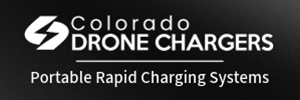You are using an out of date browser. It may not display this or other websites correctly.
You should upgrade or use an alternative browser.
You should upgrade or use an alternative browser.
DJI Mini 3 Pro video stutter?
- Thread starter linas2569
- Start date
Droning on and on...
Well-Known Member
Yes... It's skipping frames.
Don't need to be flippant, but that's about all that can be said with information you've provided. There are a million reasons that can cause this, including many that have nothing to do with the drone.
Start with this: Is that the video recorded on the SD card in the drone? Have you tried playing it on several different devices (phone, PC, etc.) with same result? What software/app were you viewing it with?
Don't need to be flippant, but that's about all that can be said with information you've provided. There are a million reasons that can cause this, including many that have nothing to do with the drone.
Start with this: Is that the video recorded on the SD card in the drone? Have you tried playing it on several different devices (phone, PC, etc.) with same result? What software/app were you viewing it with?
MaximusCZ
Well-Known Member
Thats a lot of skipped frames. Definetly looks like your SD card is too slow for the incoming data. You need faster SD card.Hello All
Can you check the video and tell me why there is a video stuttering after 35 secs on the video
TanyaA
New Member
I am struggling with the same, but I can't edit in 30fps as my film is in 25fps and I need to add the drone footage in to the same timeline. What di I do? FIlm on the drone at 25fps, I can still see the jitter in gimble movement and when panning. Filmed in 30fps had to slow down to 83% for 25fps timeline, and it is a total disaster as all those dropped uneven frames. Pleeease helppppp!!! It is driving me crazyThat's why I facepalm every time there's some debate whether to go 24, 25 or 30 fps, and everyone is talking about motion blur only. Heck, its clear as day. In the Lighthouse video you can see the guy is recording at 4k 30 fps, but if you right click the video and check "stats for nerds", you see YouTube is actually serving 25 fps video. PLUS its playing on your 60 Hertz screen, so 60 fps. You record 30 fps, throw 5 frames away each second to get 25 fps and then play it back on 60 "fps" monitor. Of course you are gonna see stuttering, you have 25 frames to display and 60 windows to display in. You paint most frames twice, but that gets you only to 50 fps. You also have to paint some frames three times. To fill the whole second.
That's why some videos are smooth. You record at 30 fps, edit at 30 fps timeline and then serve 30 fps video to 60 fps screen - every frame is painted exactly twice. Its consistent and stutter free.
If you record at anything other than 30 or 60 (or another value that you can divide 60 with without remainder), edit your video timeline at other than 30 or 60 fps, on 60 Hz screen (vaaaaast majority) you will always see stuttering.
People are arguing about the 24 vs 25 vs 30 fps while thinking about how much motion blur it allows them to capture, while completely ignoring the question "And what medium will I be watching the final output on?". Sure, if you are filming for a cinema, and you know the projector will run at 24 fps, feel free to record in 24 fps and enjoy stutter free motion blur. But if your goal is to view the video on a PC screen (or TV), make yourself a favour and record at 30 fps, and edit on 30 fps timeline.
Felix le Chat
Well-Known Member
The post you quoted sums the problem up perfectly. Whatever you try, there will always be a mismatch between 24/25fps footage and 30fps footage. The only thing to try is re-shooting your 30fps segments at 24/25fps for an edit aimed exclusively towards broadcast standards display (traditional TV/cinema)... but even that is pretty much obsolete now.
Digital screens/devices and their hertz refresh rate will have difficulty displaying "cinematic" footage and the old argument about motion blur for authenticity is a load of crap as some of the finest cinema and most of the better TV productions have been filmed at high frame rates for over 50 years.
Digital screens/devices and their hertz refresh rate will have difficulty displaying "cinematic" footage and the old argument about motion blur for authenticity is a load of crap as some of the finest cinema and most of the better TV productions have been filmed at high frame rates for over 50 years.
Similar threads
- Replies
- 3
- Views
- 773
- Replies
- 2
- Views
- 2K
DJI Drone Deals
New Threads
-
Hiring Remote Drone Pilots and Support Staff with CrewBloom
- Started by felixleo
- Replies: 1
-
3 Along the road to my daughters former school
- Started by alex_markov
- Replies: 1
-
Last Week's Most Popular Topics (December 13, 2025)
- Started by msinger
- Replies: 0
-
Members online
Total: 3,676 (members: 13, guests: 3,663)









